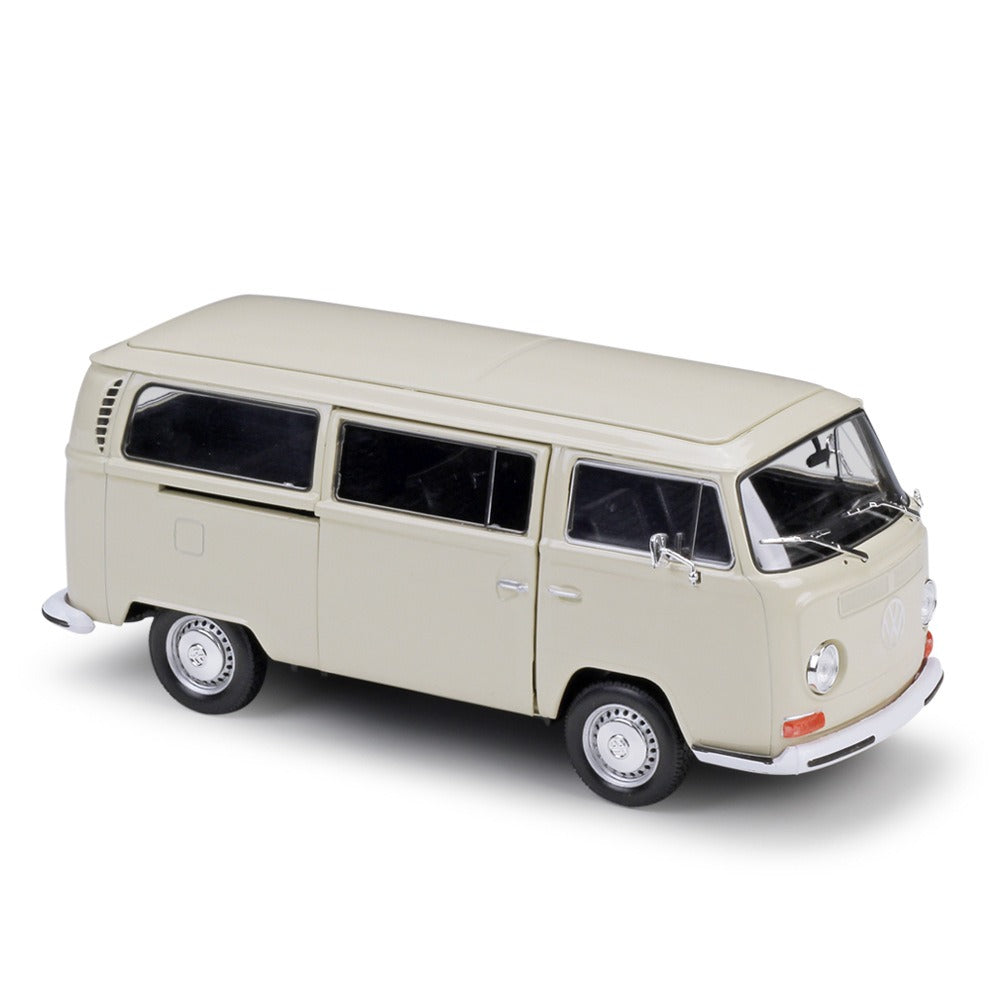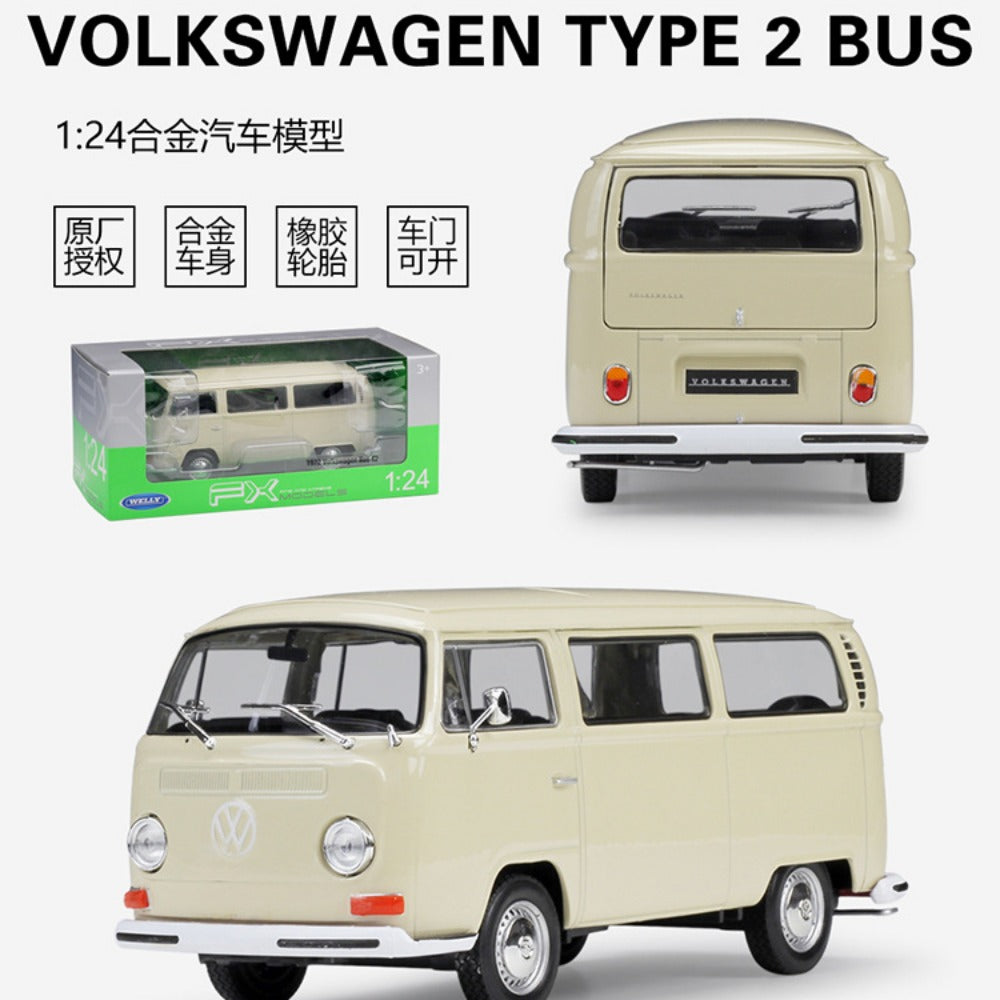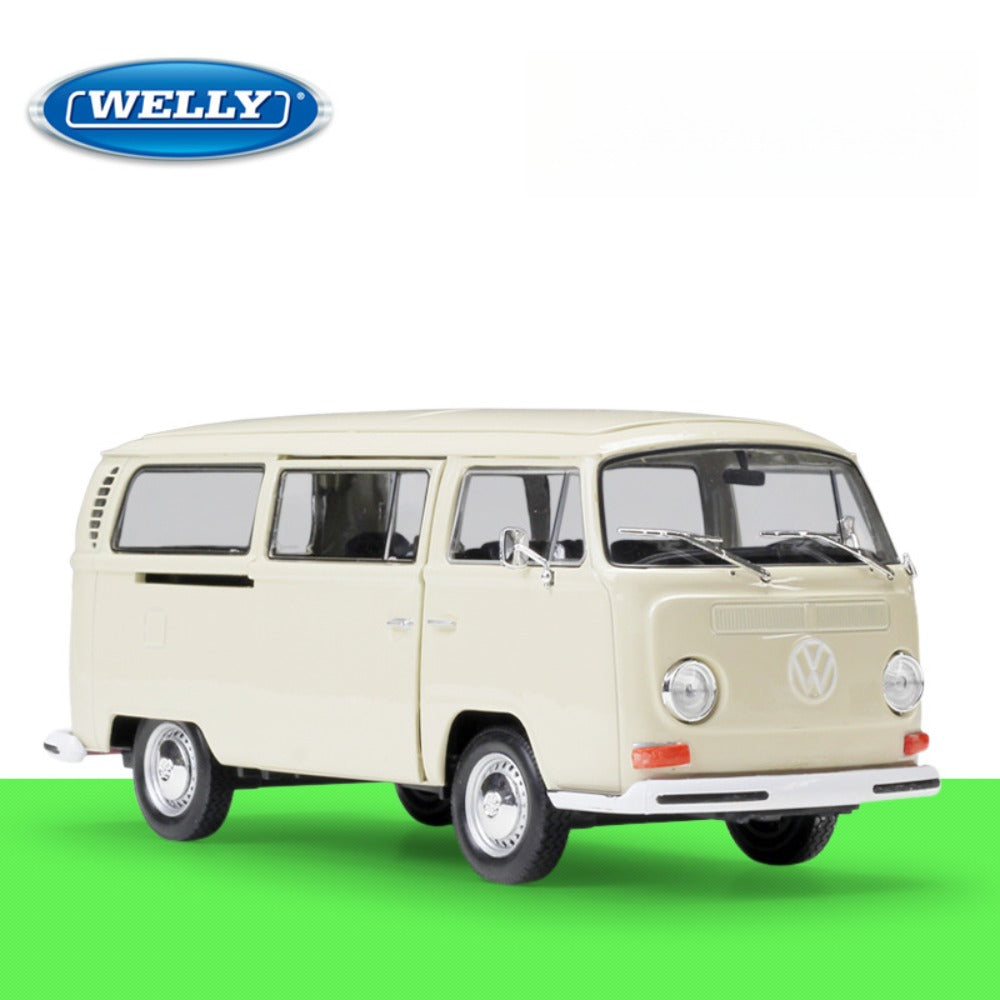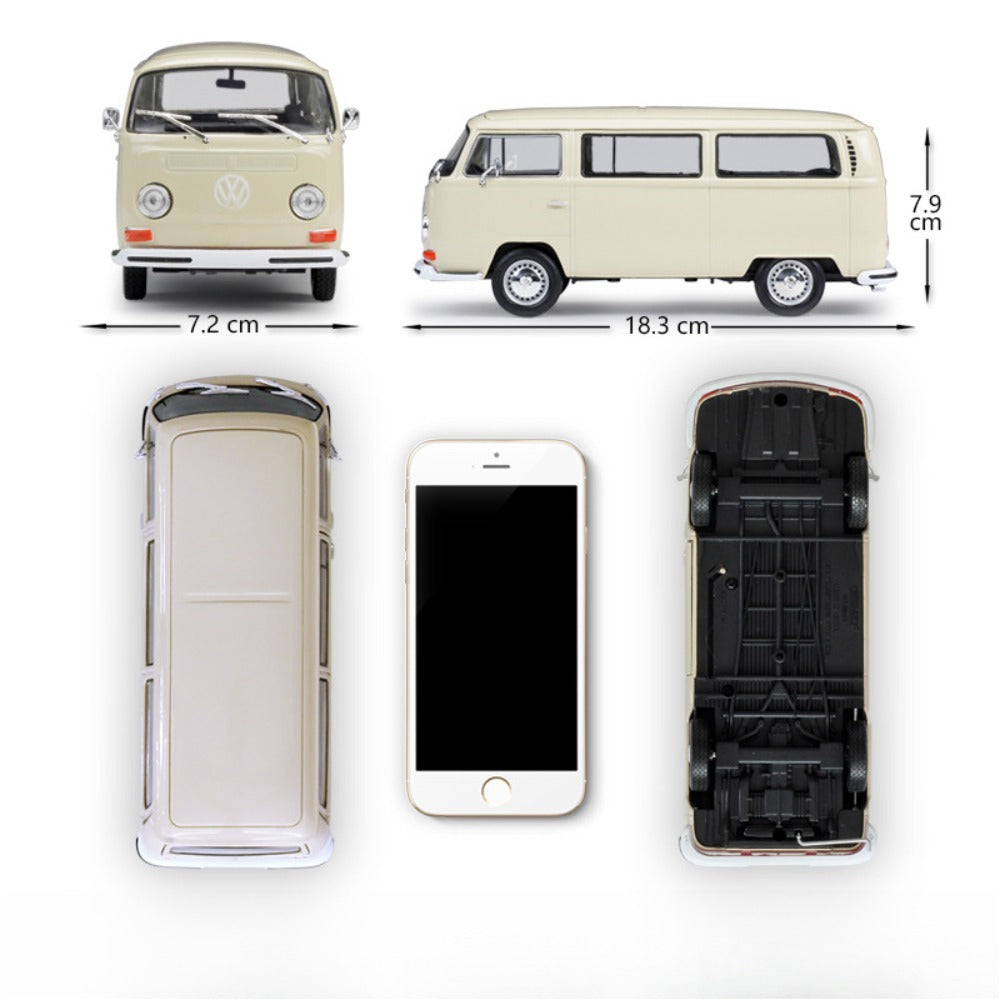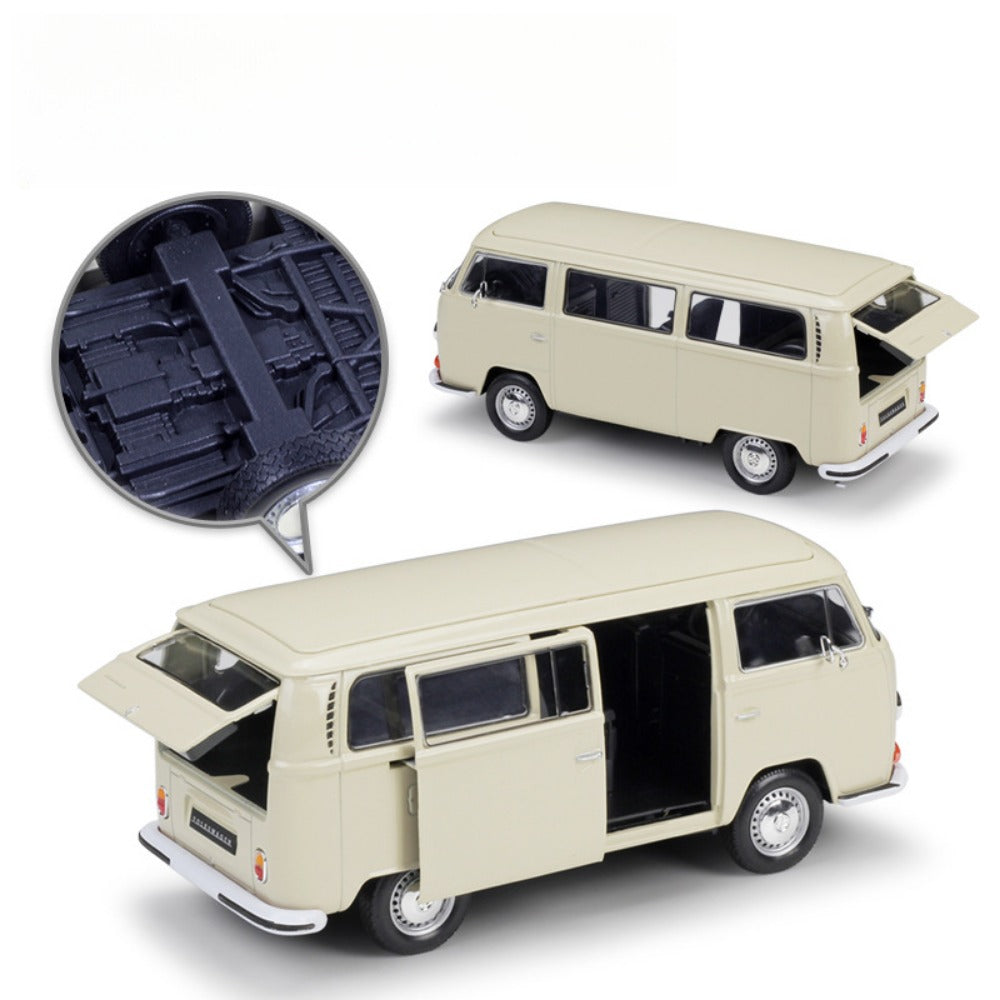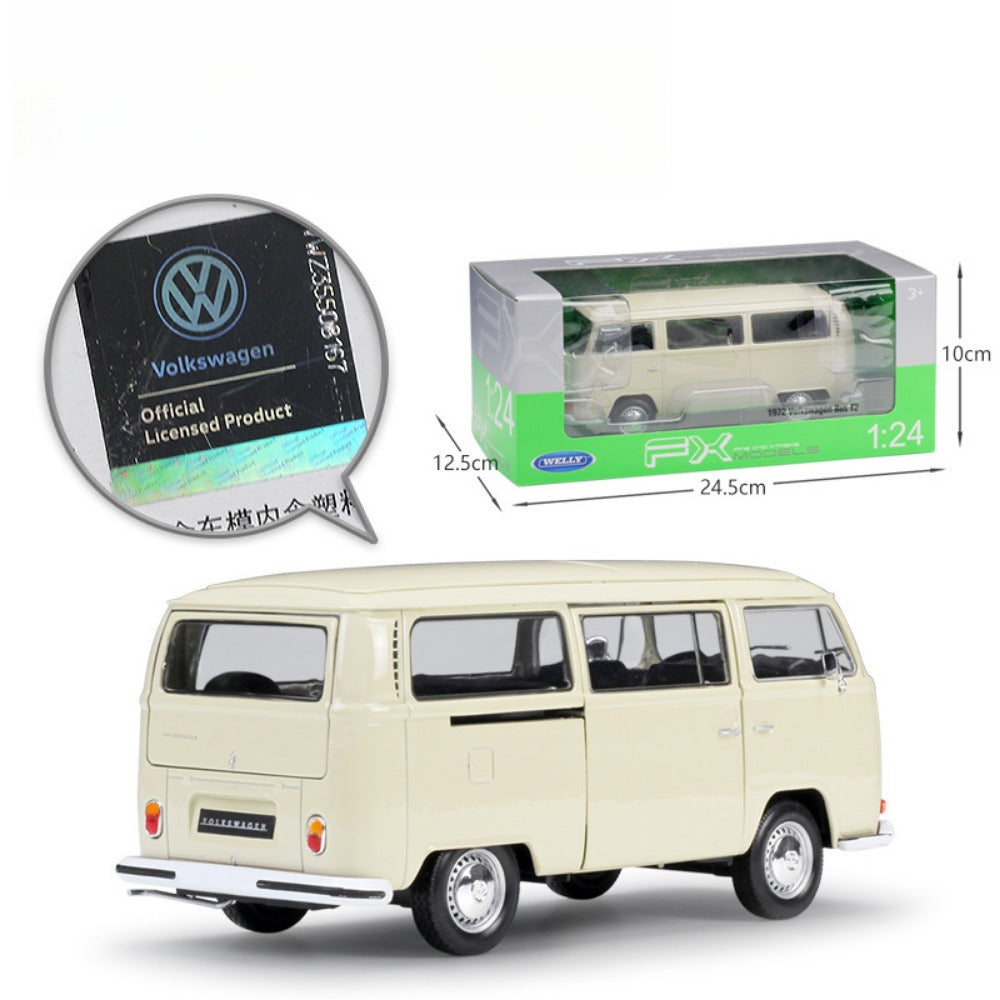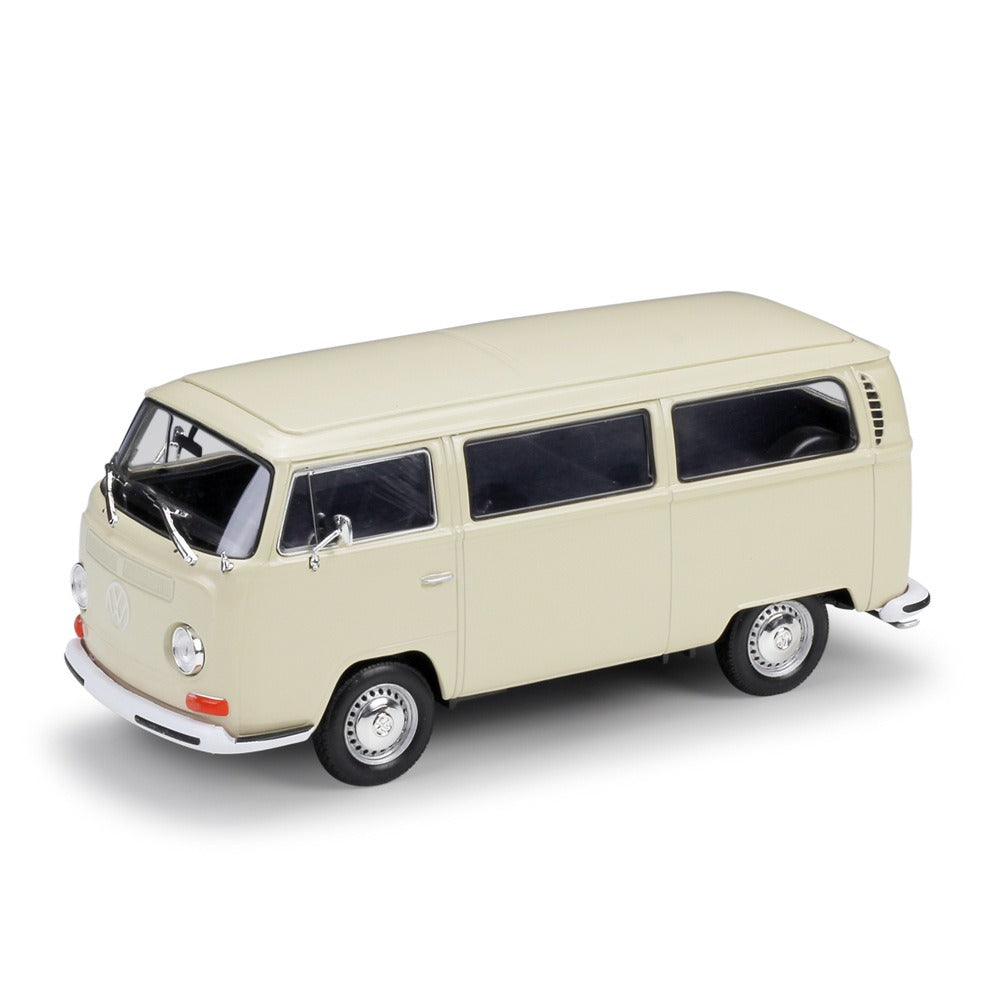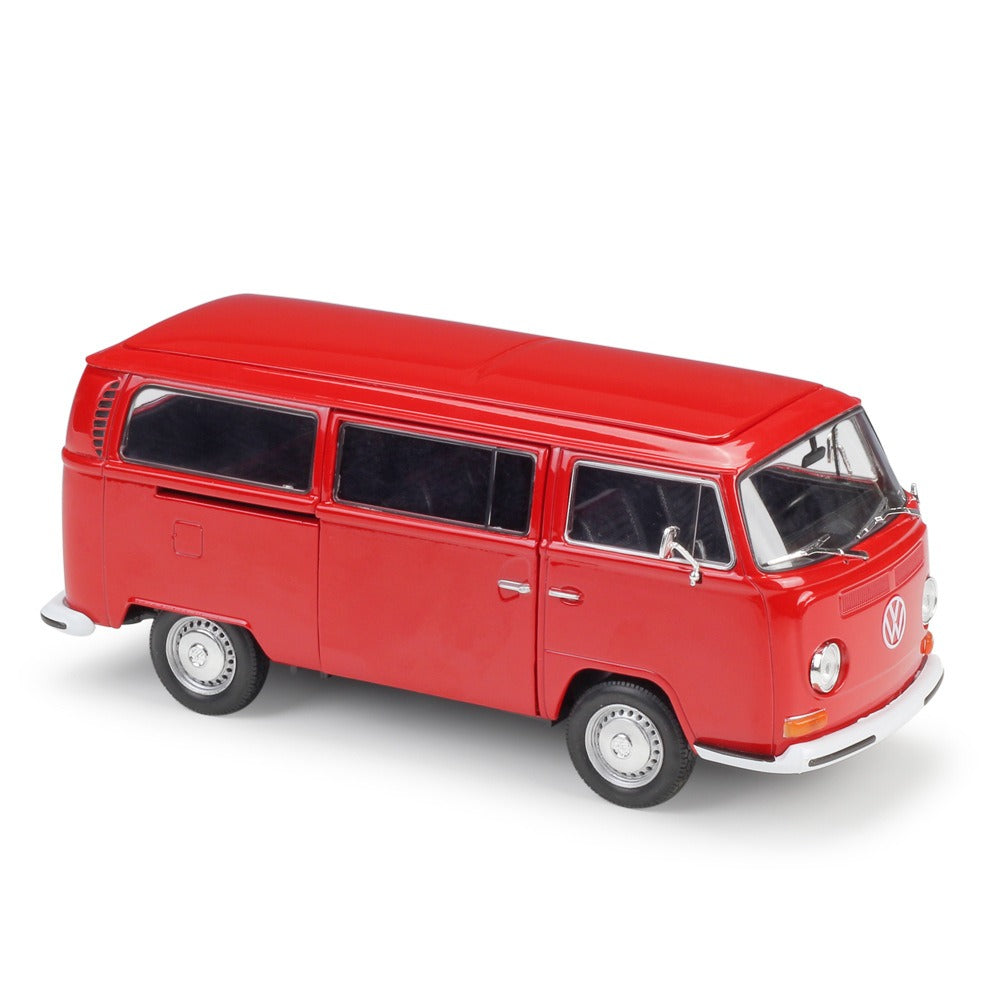old boy hobby
1/24 Scale 1972 Volkswagen Type 2 Bus Diecast Model
1/24 Scale 1972 Volkswagen Type 2 Bus Diecast Model
Couldn't load pickup availability
- diecast and pre-painted, ready to display
- material: metal & plastic
- scale: 1/24
- size: 18.3*7.2*7.9 cm
The Volkswagen Transporter, initially the Type 2, is a range of light commercial vehicles, built as vans, pickups, and cab-and-chassis variants, introduced in 1950 by the German automaker Volkswagen as their second mass-production light motor vehicle series, and inspired by an idea and request from then-Netherlands-VW-importer Ben Pon.
Known officially (depending on body type) as the Transporter, Kombi or Microbus – or informally as the Volkswagen Station Wagon (US), Bus (also US), Camper (UK) or Bulli (Germany), it was initially given the factory designation 'Type 2', as it followed – and was for decades based on – the original 'Volkswagen' ("People's Car"), which became the VW factory's 'Type 1' after the post-war reboot, and mostly known, in many languages, as the "Beetle".
The Volkswagen Transporter has been built in many variants. It may be best known for its panel vans, but it was also built as a small bus or minivan, with choices of up to 23 windows and either hinged or sliding side doors. From the first generation, both regular and crew-cab, as well as long- and short-bed pickups, were made, and multiple firms sprang up to manufacture varying designs of camper vans, based on VW's Transporter models, to this day.
For the first 40 years, all VW Type 2 variants were forward control, with a VW-Beetle-derived flat-four engine in the rear, and all riding on the same (initial thirty years – T1 and T2), or similar (T3), 2.40 m (94 in) wheelbase as the Type 1 Beetle. As a result, all forward-control Type 2 pickups were either of standard-cab, long-bed or crew-cab, short-bed configuration, and because of the relatively high bed floor (above the rear, flat engine), most pickups came with drop sides in addition to the tailgate. In 1979, the third-generation Type 2 introduced an all-new, more square and boxy body, and in the 1980s also introduced a raised four-wheel-drive bus variant.
From the introduction of the fourth-generation Transporter in 1990, the vehicle layout changed to a more common front-engined one – no longer forward-control – and also changed from rear- to front-wheel drive, with four-wheel–drive remaining optional. From then on, the platform no longer shared technological legacy with the Beetle, and Volkswagen just called them 'Transporter', and no longer 'Type 2'. The new models, though growing a bit in length, got a significantly longer wheelbase that pushed the wheels closer to the truck's corners, noticeably reducing its front and rear overhangs, and extended-wheelbase models were also introduced.
--copied from Wikipedia
Share
